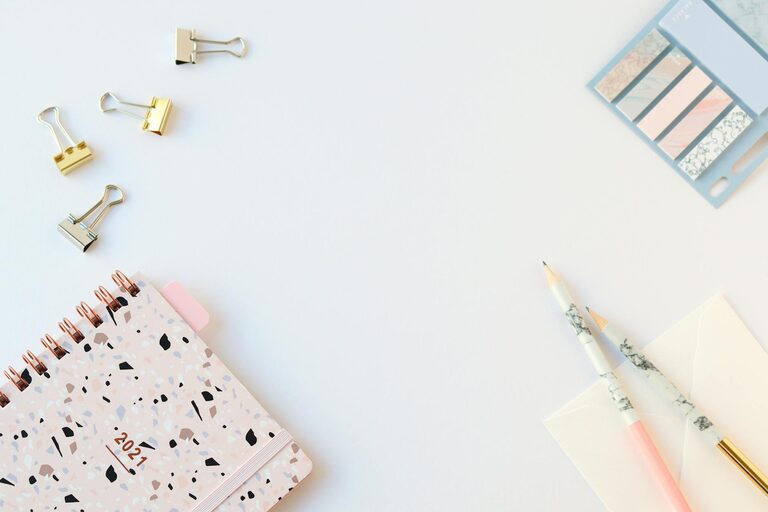Bullet journaling has become a popular way to organize daily life while tapping into creativity and mindfulness. Whether you want to track habits, plan tasks, or simply jot down ideas, a bullet journal can be a flexible tool tailored to your needs. If you’re new to bullet journaling, this beginner guide will help you understand the basics and get started confidently.
What Is a Bullet Journal?
A bullet journal, often abbreviated as BuJo, is a customizable planner and journal combined. It was invented by Ryder Carroll, a digital product designer, as a way to keep notes, tasks, calendars, and ideas in one place. Unlike traditional planners with fixed layouts, a bullet journal uses a system of bullets and symbols to quickly capture information.
The beauty of bullet journaling lies in its adaptability. You decide what goes in — daily to-do lists, monthly goals, mood trackers, or anything else that suits your lifestyle.
—
Essential Supplies to Get Started
You don’t need much to begin:
– Notebook: A dotted or grid notebook is preferred because it helps keep your writing straight and allows for flexible layouts. Popular choices include Leuchtturm1917 and Moleskine.
– Pen: Any pen will do, but many like using fine liners or gel pens for smooth writing.
– Ruler (optional): Handy for drawing straight lines and creating neat sections.
– Markers or colored pens (optional): For adding color and emphasis.
Remember, your journal doesn’t have to be fancy or artistic — start basic and add flair as you grow more comfortable.
—
Core Components of a Bullet Journal
The bullet journaling system consists of several key parts that create an efficient organizational flow.
1. Index
Create this at the beginning of your journal. It’s like a table of contents that helps you locate pages quickly. As you add collections or spreads, write their titles and page numbers in the index.
2. Future Log
A place to jot down long-term plans, appointments, or goals for upcoming months. Often laid out in a few calendar-format boxes, it allows you to glance at future events without flipping through your entire journal.
3. Monthly Log
This section combines a calendar page and a task list for the month. Write the dates in a column with the days of the week beside them. On the opposite page, list tasks, goals, or projects you want to focus on that month.
4. Daily Log
Your running list of tasks, events, and notes for each day. Use different bullets or symbols (e.g., a dot for tasks, a circle for events, a dash for notes) to keep things clear.
—
Common Symbols and Bullets
Symbols streamline your notes and help you quickly identify what each entry represents. Here are some basics:
– • (dot): Task
– ○ (circle): Event
– – (dash): Note
– X: Completed task
– > (right arrow): Migrated task (moved forward)
– < (left arrow): Scheduled task (moved to the future log or calendar)
You can customize symbols to fit your preferences.
—
Setting Up Your First Bullet Journal
Follow these simple steps to create your first bullet journal setup:
- **Number Your Pages:** Either pre-number or do it as you go to aid your index.
- **Create the Index:** Reserve the first 2-4 pages for this.
- **Set Up Future Log:** Divide 2 or 4 pages into monthly sections.
- **Design Your Monthly Log:** Add dates on the left page and tasks on the right.
- **Start Daily Logging:** Begin your first day with tasks, events, or notes.
—
Tips for Staying Consistent
– Keep it simple: Don’t feel pressured to create elaborate spreads. Simplicity often leads to better consistency.
– Set a routine: Spend 5-10 minutes each evening or morning reviewing your journal.
– Use habit trackers: These help monitor habits like water intake, exercise, or reading.
– Be flexible: It’s okay to change layouts or skip days without guilt.
– Add collections: These are pages dedicated to specific themes like books to read, meal planning, or budget tracking.
—
Benefits of Bullet Journaling
– Boosts productivity: Helps prioritize tasks and reduce overwhelm.
– Encourages mindfulness: Writing by hand slows down thought processes, aiding focus.
– Enhances creativity: You choose how to design spreads and add artistic touches.
– Improves memory: Manually writing notes strengthens recall.
– Customizable: Fits any lifestyle, whether simple or detailed.
—
Sample Simple Daily Log Layout
Here’s an easy starting layout for your daily log:
– Write the date at the top.
– Add tasks with “•” bullet points.
– Note events with “○” symbols.
– Add any extra thoughts as notes with “–”.
– Mark completed tasks with an “X”.
– At the end of the day, migrate unfinished tasks with “>” to the next day or monthly log.
—
Final Thoughts
Starting a bullet journal is a rewarding habit that can transform the way you organize your life. It requires minimal supplies and a gentle commitment. The key is to keep it personal and practical for your needs. With time, your journal might become a cherished space for planning, reflection, and creativity.
Happy journaling!

